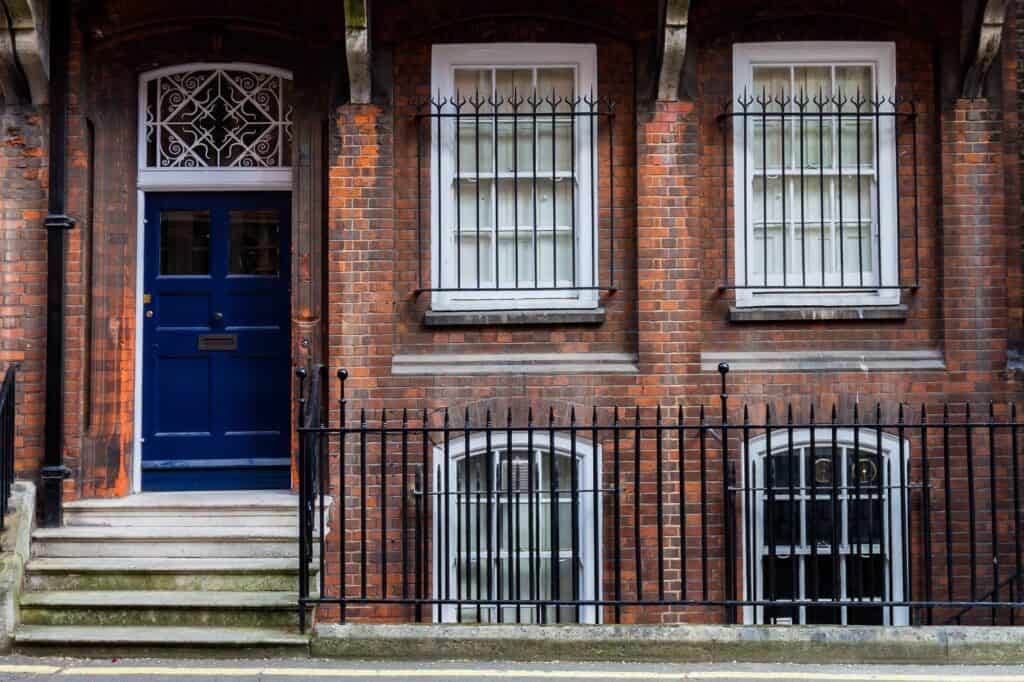Planning to move to Wimbledon and need affordable housing? This guide covers the best affordable housing options when moving to Wimbledon. Learn about shared ownership, intermediate renting, and other schemes to find a home within your budget. Whether you are a first-time buyer, looking to rent, or seeking accessible housing, this comprehensive guide will help you navigate the various options available, ensuring you find the perfect place to call home in Wimbledon.
Key Takeaways
- Shared ownership schemes in Wimbledon allow individuals to purchase between 25% to 75% of a property with a lower deposit requirement, making homeownership more accessible.
- Affordable housing options such as intermediate renting and London Living Rent homes are available, enabling renters to save while providing stable housing solutions.
- Housing associations play a crucial role in managing affordable housing and provide various schemes that prioritize access for those in need, enhancing opportunities for homeownership.
Understanding Shared Ownership in Wimbledon
Shared ownership is a fantastic option for those who find full property prices daunting. This part-buy-part-rent scheme allows you to purchase between 25% to 75% of a property while paying rent on the remaining share. One of the standout benefits of shared ownership is the smaller deposit requirement, which is typically 5-10% of the share price, making it more accessible than traditional home buying.
To qualify for new-build shared ownership, your household income must be below £80,000, or £90,000 if purchasing in London, and you must not own any other property. The financial assessment process considers your income, savings, and credit commitments to ensure you meet the eligibility criteria. This thorough vetting ensures the opportunity reaches those who truly need it.
Staircasing, the process of increasing your ownership share in the property, allows you to move towards full ownership gradually. However, increasing your share may incur additional costs. Despite these costs, renting the unowned share is generally cheaper than market rent, making homeownership more accessible.
For those considering resale shared ownership homes, financial eligibility checks and local connection requirements may still apply.
Affordable Housing Schemes in Wimbledon
Wimbledon offers a variety of affordable housing schemes, catering to different needs and financial situations. Shared ownership is one such scheme, allowing individuals to purchase a portion of a home, generally between 25% and 75%, while renting the remaining share. To qualify, a household must earn less than £71,000 for one or two-bedroom properties and £85,000 for larger homes.
Intermediate renting is another viable option, intended to help renters save for shared ownership. This scheme allows tenants to pay 80% of the typical rent for a similar property in the private market, making it a cost-effective choice for those planning to buy in the future. Typically, this arrangement lasts up to five years, providing a stable and affordable housing solution while you save.
Government or housing association schemes can also provide subsidised rentals for eligible renters.
Government or housing association schemes can also provide subsidised rentals for eligible renters. Shared ownership and intermediate renting both offer paths to affordable housing in Wimbledon. These schemes provide stability and a stepping stone towards eventual homeownership in one of London’s most desirable areas.
London Living Rent Homes
London Living Rent homes are tailored for middle-income Londoners who find the prospect of buying a home daunting. To qualify, applicants must have a maximum annual household income cap of £67,000 and either live or work in London, unable to afford home purchasing through other means. Additionally, the program offers a pathway to a London living rent home for those who meet the criteria.
Rent for these homes is set at one-third of the average local household income, ensuring affordability. With an initial 3-year Assured Shorthold Tenancy (AST), London Living Rent Homes aim to enable renters to save for a home purchase within ten years, allowing them to save additional money each month.
This scheme provides a practical stepping stone towards homeownership, making it a viable option for many.
Navigating the Private Rented Sector
The private rented sector can be tricky to navigate, but affordable rental properties are available. Renters can negotiate rental prices with landlords to potentially reduce costs. Exploring neighbourhoods outside central London can lead to more budget-friendly rental options, offering the same amenities at a lower cost.
Sharing a rental property with roommates can significantly lower individual housing costs, making it an attractive option. Considering unconventional housing options, like co-living spaces, can uncover more affordable rentals. When it comes to moving into your new affordable home in Wimbledon, consider hiring a reliable man and van service in Wimbledon to make the process smooth and stress-free.
Staying informed about the rental market helps renters act swiftly on suitable properties, ensuring they do not miss out on good deals.
Be aware of tenancy agreement details, such as a 12-month break clause in the initial three-year agreement. This can provide some flexibility and peace of mind in your rental journey. Staying proactive and open-minded can help you find a rental property that fits your budget and lifestyle.
Finding Wheelchair Accessible Housing

Wheelchair-accessible housing can be challenging to find, but specific schemes are designed to help. The Home Ownership for People with Long-term Disabilities (HOLD) allows disabled individuals to purchase homes using their benefits. This scheme is tailored to meet the needs of those with long-term disabilities, providing an opportunity for homeownership.
For detailed advice about the HOLD scheme, contact My Safe Home, which offers comprehensive guidance and support. This resource ensures that eligible individuals have all the information they need to navigate the process and find their own home.
New-Build Shared Ownership Properties
New-build shared ownership properties provide an excellent opportunity for individuals to step onto the property ladder. These schemes typically allow buyers to purchase 25% of the property, making homeownership more attainable.
Housing associations play a crucial role in developing new housing within the borough, enhancing the availability of shared ownership options. First-time buyers often use shared ownership schemes or guarantor mortgages to navigate the property market. These new homes provide modern amenities and a fresh start for those looking to settle in Wimbledon.
Open Market Shared Ownership Options
Open Market Shared Ownership options provide flexibility and priority for social housing tenants. This scheme is administered by Moat and covers several areas, including Merton, Bexley, Bromley, Croydon, Greenwich, Lewisham, and Southwark.
Social housing tenants receive priority, ensuring access to affordable housing for those in need. This scheme allows for more choices in the housing market, offering an alternative path to homeownership for eligible individuals.
Resale Shared Ownership Homes
Resale shared ownership homes are individual second-hand homes sold on a part-buy, part-rent basis. These properties offer an affordable entry point into homeownership, as you buy a share and pay rent to the housing association on the outstanding share.
Households ineligible for new-build shared ownership schemes due to income limitations may still qualify to buy shared ownership resales. However, resale shared ownership homes might be more expensive than new builds because you may be buying a larger share of the property. This option provides flexibility and can be a quicker route to owning a home.
Equity Loan and Discounted Market Schemes
Equity loans are a helpful tool for buyers, offering assistance of up to 20% of the property’s purchase price without incurring interest charges for the first five years. After five years, an interest rate of 1.75% is applied to the equity loan amount, with monthly management fees of £1 required until the loan is paid off. Repayments can be made at any time based on the home’s market value.
Discounted market schemes offer reduced price options but limit the buyer’s ownership stake. These schemes provide affordable options but come with specific limitations, similar to equity loan schemes. Both options offer viable paths to homeownership for those on a budget.
Tips for First-Time Buyers
First-time buyers often face several challenges, but with the right tips, the process can be smoother. A good credit history is essential to qualify for favourable mortgage rates. Additionally, first-time buyers typically need to save between 5% and 20% of the home’s value as a deposit to secure a mortgage.
Consulting a mortgage broker can provide tailored guidance and access to a wider range of mortgage products. Professional mortgage advisors can help buyers navigate the complexities of mortgage products and requirements. It is also crucial to start saving for the deposit as early as possible to improve the chances of securing a mortgage.

Many first-time buyers mistakenly overlook the importance of having all financial documents, like bank statements, registered to their current address. Using mortgage calculators can help prospective buyers estimate how much they can borrow based on their income and deposit size. These tips can help first-time buyers achieve their dream of homeownership.
The Role of Housing Associations
Housing associations in Merton manage around 11,000 properties, playing a vital role in providing affordable housing. Housing association tenants are prioritised for affordable housing schemes in Merton. Many housing associations allow direct applications for their properties, in addition to managing properties through a choice-based lettings service.
Those interested in shared ownership or intermediate renting must register with Merton Council’s housing register. To qualify for the Home Ownership for People with Long Term Disabilities, applicants must be over 18, have a housing need, and receive a high or medium Disability Living Allowance. Those interested in the HOLD scheme can receive comprehensive guidance by contacting My Safe Home.
Housing association services are designed to improve access to affordable housing, benefiting a diverse range of applicants in Wimbledon. Their role is crucial in ensuring that affordable housing is available to those who need it most.
Summary
In summary, Wimbledon offers a variety of affordable housing options, from shared ownership and London Living Rent homes to intermediate renting and resale shared ownership homes. Each scheme has its own set of benefits and eligibility criteria, making it possible for individuals with varying financial situations to find a suitable home.
Exploring these options and taking proactive steps towards homeownership can make living in Wimbledon a reality. Whether you are a first-time buyer or looking for accessible housing, the key is to stay informed and take advantage of the resources available. Your dream home in Wimbledon could be just around the corner.
Frequently Asked Questions
Who qualifies for shared ownership in Wimbledon?
To qualify for shared ownership in Wimbledon, you must have a household income below £80,000 (or £90,000 if purchasing in London) and cannot own any other property.
What is the London Living Rent home scheme?
The London Living Rent home scheme enables middle-income Londoners to rent at a rate that is one-third of the average local household income, thus facilitating savings for a future home purchase within ten years. This initiative includes a 3-year Assured Shorthold Tenancy for added security.
How does the HOLD scheme assist those with disabilities?
The HOLD scheme facilitates home ownership for individuals with disabilities by enabling them to utilize their benefits for purchasing homes. This program provides essential support, making it easier for them to achieve stable housing.
What are the benefits of new-build shared ownership properties?
New-build shared ownership properties enhance accessibility to homeownership by enabling buyers to acquire a smaller share, often starting at 25%, which alleviates the financial burden. This arrangement provides a valuable pathway for those who might otherwise struggle to enter the housing market.
How do equity loans work for homebuyers?
Equity loans assist homebuyers by providing up to 20% of the property’s purchase price without interest for the first five years, followed by a 1.75% interest rate thereafter. This structure allows buyers to manage initial costs effectively while benefiting from added financial support.







